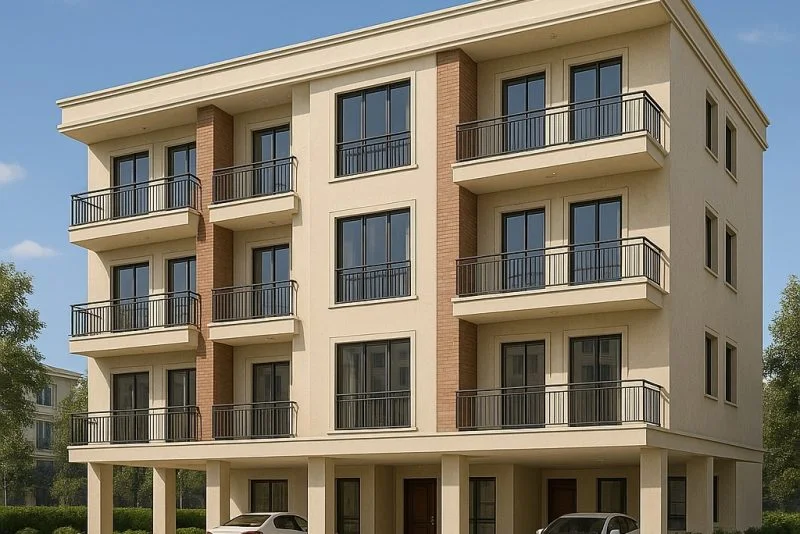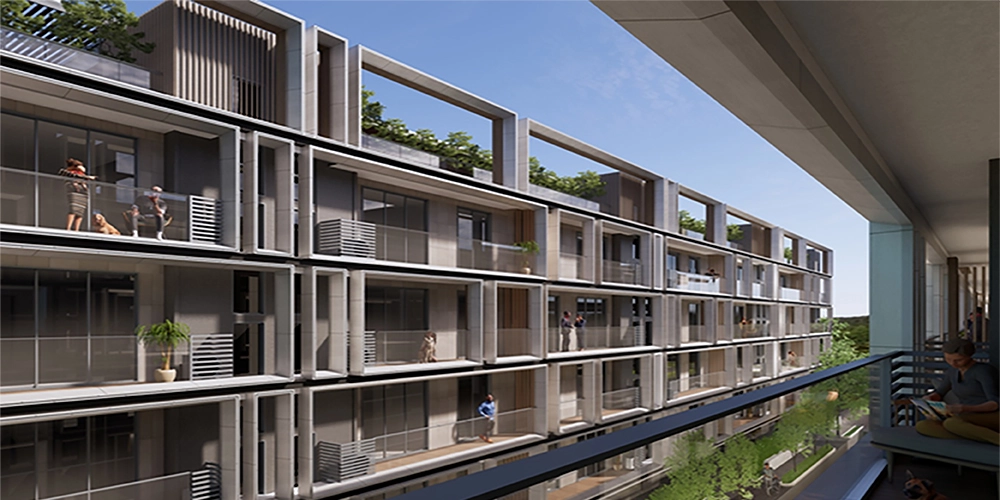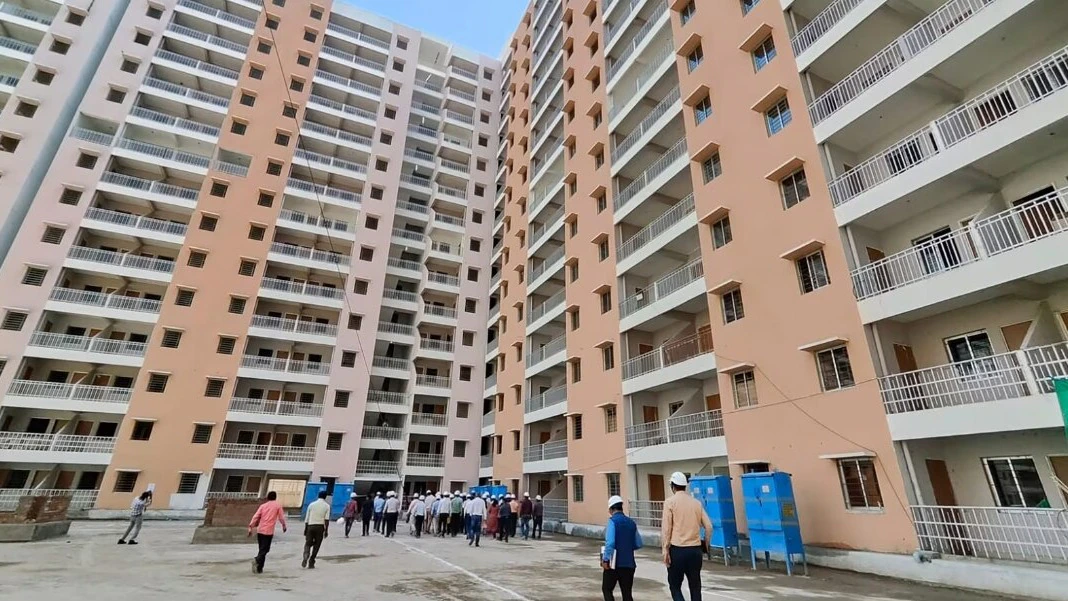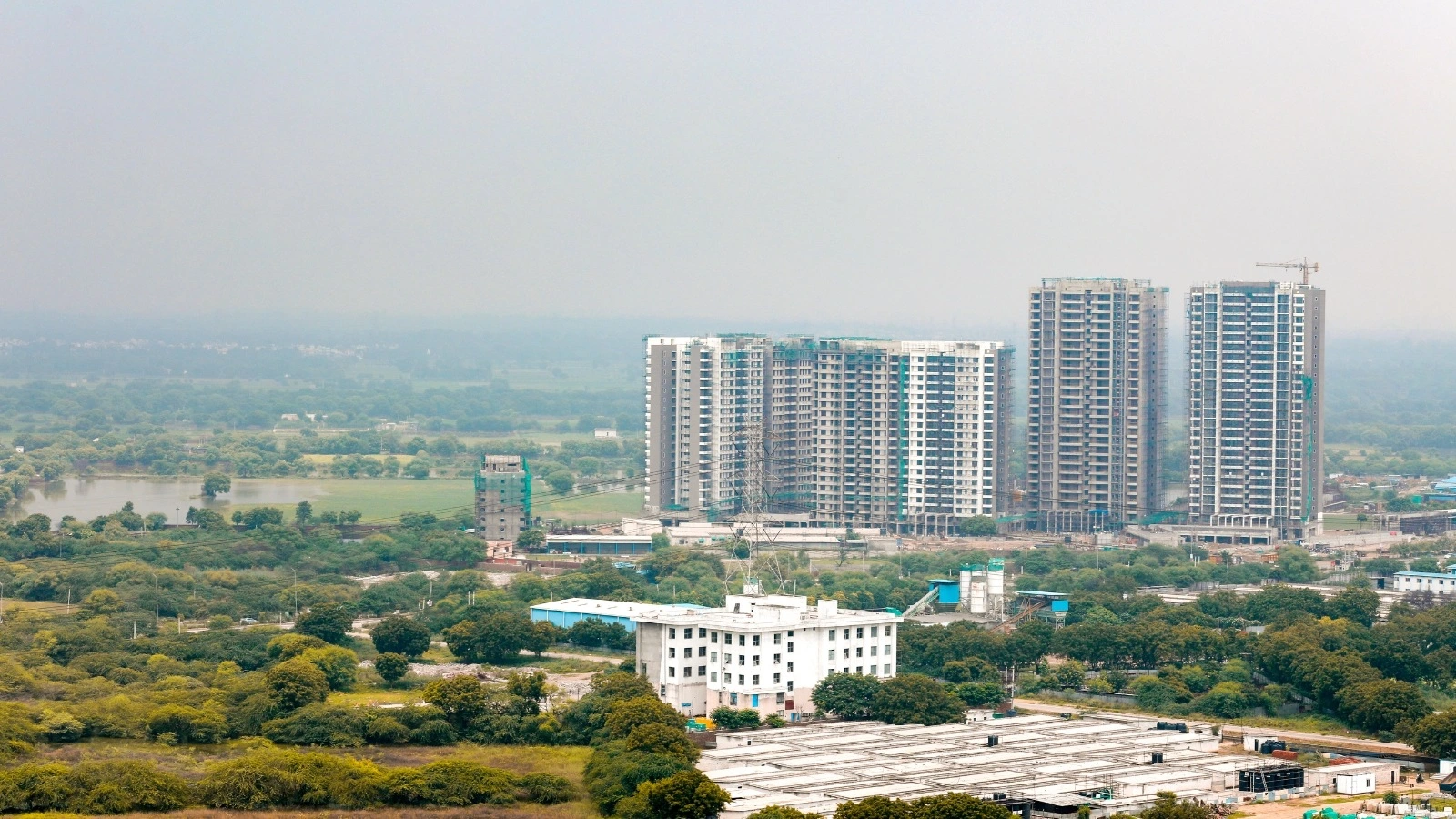Table of Content
When purchasing real estate, one of the most significant decisions is choosing between a builder floor and an apartment. Both options cater to distinct preferences and lifestyles, making the decision a matter of individual priorities. While builder floors offer exclusivity and a more private living experience, apartments emphasize community living with shared conveniences and amenities. This article delves into the differences, advantages, and disadvantages of builder floors and apartments, helping you determine which option is best suited to your needs.
What Are Builder Floors and Apartments?
Builder Floors: A Closer Look
Builder floors are independent residential units that occupy an entire floor of a low- to mid-rise building, typically two to four stories high. When you purchase a builder floor, you gain exclusive ownership of the entire floor, often accompanied by private entrances, dedicated parking spaces, and control over utilities. These properties are designed to offer homeowners a blend of privacy and independence, often resembling a hybrid between an independent house and an apartment.
Apartments: An Overview
Apartments, on the other hand, are individual housing units within multi-story buildings. They are part of a shared community where residents live in proximity, sharing common areas like corridors, staircases, and lobbies. Apartments are often designed for multiple families and provide access to a range of shared amenities, typically within gated communities.
The key structural difference lies in ownership and exclusivity. Builder floors emphasize privacy and autonomy, while apartments focus on community living and convenience.

Privacy vs. Community Living
Builder Floors: Privacy and Independence
For individuals and families who value solitude and independence, builder floors are an excellent choice. Since you own the entire floor, there are no shared walls, corridors, or entrances with neighbors. This level of exclusivity ensures a peaceful living environment where you can enjoy your space without disturbances.
Apartments: A Sense of Community
In contrast, apartments promote community interaction and social bonding. Shared spaces such as lobbies, parks, and clubhouses provide opportunities for neighbors to connect. Apartments are ideal for those who enjoy a sense of belonging and shared living experiences. However, the downside is a lack of complete privacy, as neighbors are often just a wall away.
Also read: Top 10 Stylish Balcony Grill Designs for Modern Apartments
Space and Customization Options
Builder Floors: Room to Personalize
Builder floors generally offer more spacious layouts, with larger carpet and built-up areas. This allows homeowners to customize interiors and even make structural modifications without the need for approvals from a homeowners’ association. Whether it’s redesigning interiors or creating a private terrace, builder floors provide the flexibility to tailor the space to your lifestyle.
Apartments: Restricted Modifications
Apartments, while efficiently designed, often come with limitations on customization. Structural changes may require permission from the builder or homeowners’ association, particularly if they impact shared walls or common areas. Additionally, apartments typically have smaller carpet areas, which may limit design flexibility.
Cost and Maintenance
Builder Floors: Higher Costs for Autonomy
Builder floors are typically priced higher than apartments due to their exclusivity, larger space, and premium features. Along with the upfront cost, maintenance responsibilities for the entire floor, including repairs and utilities, fall solely on the homeowner. This can add to the overall expenses in the long run.
Apartments: Shared Costs for Shared Benefits
Apartments are generally more affordable, making them a popular choice for first-time homebuyers. Maintenance costs are shared among residents, with a periodic fee collected by the homeowners’ association. These fees cover common area upkeep, security, and amenities, reducing individual financial burdens.
Amenities and Infrastructure
Builder Floors: Selective Amenities
While builder floors may include exclusive amenities like private parking, terraces, or gardens, they lack the extensive range of facilities commonly found in apartment complexes. For example, builder floors may not offer swimming pools, gyms, or community halls, which are staples in many apartment communities.
Apartments: A Wealth of Shared Amenities
Apartments excel in offering a variety of amenities such as swimming pools, gyms, children’s play areas, and landscaped gardens. Gated communities often provide 24/7 security, power backup, and utility management services, enhancing the overall living experience. These facilities are managed collectively, ensuring consistent quality and accessibility.
Resale Value and Investment Potential
Builder Floors: High Value, Limited Market
Builder floors often command a higher resale value due to their larger built-up area and exclusivity. However, the market for such properties is niche, attracting buyers who specifically seek independent living. This can make resale more time-consuming compared to apartments.
Apartments: Steady Demand, Lower Resale Value
Apartments tend to have a more consistent demand due to their affordability and suitability for a wide demographic. While their resale value may be lower than builder floors, apartments are generally easier to sell, especially in urban areas where demand for affordable housing is high.
Pros and Cons of Builder Floors and Apartments
Builder Floors
Advantages:
- Complete privacy and independence.
- Larger living areas with customization options.
- Exclusive access to amenities like private parking and terraces.
Disadvantages:
- Higher upfront costs and maintenance responsibilities.
- Limited shared amenities compared to apartments.
Apartments
Advantages:
- Affordable pricing and shared maintenance.
- Access to a wide range of amenities and security.
- A sense of community and social interaction.
Disadvantages:
- Limited privacy and customization.
- Dependency on homeowners’ associations for decisions.
Factors to Consider When Choosing
- Lifestyle Needs: Do you prioritize privacy and autonomy, or do you value community living?
- Budget: Consider both upfront costs and ongoing maintenance expenses.
- Location: Proximity to essential services and workplace accessibility.
- Long-Term Goals: Think about resale value and investment potential.
Conclusion
The choice between a builder floor and an apartment ultimately depends on your lifestyle, preferences, and financial capacity. Builder floors cater to those who seek independence, privacy, and flexibility, albeit at a higher cost. Apartments, on the other hand, provide affordability, convenience, and access to shared amenities, making them a popular choice for families and young professionals.
Evaluate your priorities, consider your budget, and assess your long-term goals to make an informed decision. Whether you opt for the exclusivity of a builder floor or the vibrant community of an apartment, ensure that your choice aligns with your vision of an ideal home.
Also read: Understanding Builder Floor – Meaning, Differences, Pros & Cons!


_1750748395.jpg)

_1766133697.webp)






Ans 1. A builder floor is an independent residential unit occupying an entire floor in a low- to mid-rise building. These units typically offer privacy, larger living spaces, and the freedom to customize interiors. Builder floors resemble a hybrid between apartments and independent houses, offering exclusive access to amenities like parking and terraces.
Ans 2. An apartment is a housing unit in a multi-story building within a shared community. Apartments provide access to shared spaces such as corridors, parks, and clubhouses, and they often come with a variety of communal amenities like swimming pools and gyms.
Ans 3. Builder floors offer complete privacy, as there are no shared walls, corridors, or entrances with neighbors. Apartments, however, promote community living, which often involves shared walls and communal spaces, leading to less privacy.
Ans 4. Builder floors typically provide larger carpet areas and greater flexibility for customization, including structural modifications. Apartments, while efficiently designed, often have restrictions on modifications and offer smaller living spaces.
Ans 5. Yes, builder floors generally have a higher upfront cost due to their exclusivity, larger spaces, and premium features. Apartments are more affordable, with shared maintenance costs reducing the financial burden for individual homeowners.
Ans 6. Builder Floors: Selective amenities like private parking and terraces but lack extensive facilities like gyms or swimming pools.Apartments: A wide range of shared amenities, including swimming pools, gyms, children’s play areas, and 24/7 security.
Ans 7. Builder floors often have a higher resale value due to their exclusivity and spacious layouts. However, they cater to a niche market, which may make resale time-consuming. Apartments generally have steady demand and are easier to sell due to their affordability and broader appeal, though their resale value may be lower.
Ans 8. Consider your lifestyle needs (privacy vs. community living), budget (both initial and maintenance costs), location (proximity to work and services), and long-term goals (investment potential and resale value).
Ans 9. Builder floors are ideal for individuals and families who value privacy, independence, and the freedom to customize their living space. They are also suitable for those willing to bear higher costs for exclusivity.
Ans 10. Apartments are well-suited for families, young professionals, and first-time buyers who prioritize affordability, convenience, and access to shared amenities. They also appeal to those who enjoy community living.
Ans 11. In builder floors, homeowners are solely responsible for maintenance and repairs. In apartments, maintenance costs are shared among residents, with the homeowners’ association managing common areas and amenities.
Ans 12. The better choice depends on your personal preferences. Builder floors offer independence and customization, while apartments provide convenience and a community-centric lifestyle. Evaluate your priorities and future plans to make an informed decision.